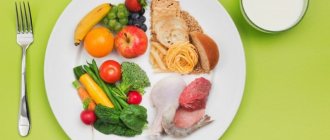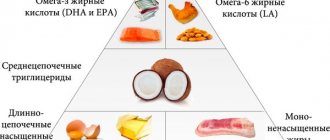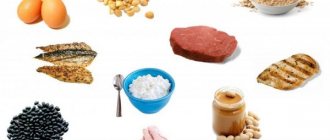How to organize a child’s nutrition so that the diet can satisfy all energy needs at this age. During the period when a child goes to school, he experiences increased psychological and physical stress, so food should be healthy, nutritious and as beneficial as possible. Proper nutrition for school-age children is the key to their strong immunity, good academic performance and health. A lot of attention has been paid to this topic, but some questions remain unanswered. What foods should you limit in your diet? Which diet should you choose? What is the best cooking method?
Cocoa and chocolate
Cocoa beans contain magnesium, a trace element necessary for normal memory function. Therefore, freshly brewed hot cocoa for breakfast will provide the student with “long-lasting” energy for the whole day. Cocoa also helps to dilate blood vessels, improve blood circulation, stimulate brain activity and improve mood. If your child loves chocolate, then bitter chocolate, which contains more than 60% cocoa beans, will be beneficial for the student’s mind.
Recommendations for organizing proper nutrition for schoolchildren
The following principles of healthy nutrition for schoolchildren are generally accepted by pediatricians and nutritionists around the world:
- Calorie content. When creating a diet for every day, it is necessary to take into account the child’s energy consumption.
- Diversity. This is one of the main principles of creating a menu; this is the only way to provide the body with essential amino acids.
- Mode. The child should eat regularly, the intervals between meals should be regulated.
- Balanced diet. The presence of animal proteins is considered mandatory. Carbohydrates that are quickly broken down should make up no more than 20%.
- Vitamins. The diet should include vegetables and fruits.
Of course, it is necessary to take into account the individual characteristics of the child. It is extremely important that children eat fish at least once or twice a week. Every day you need to consume dairy products, especially yogurt, milk, cheese. All kinds of sweet treats and fatty foods are allowed in the diet, but they should not replace healthy foods.
A few words about calories
You can count calories not only during weight loss, but also to keep your body in good shape. You can also calculate caloric intake for your child.
- Primary school students have their own calorie allowance, which is no more than 2400 kcal.
- Schoolchildren who study in secondary school should receive 2500 kcal.
- High school students are entitled to up to 2800 kcal.
- Children who actively engage in sports need energy-dense nutrition, so they should consume 300 kcal more.
If you don’t have time to choose the calorie intake for yourself and your family members, you can use ready-made menus from Grow Food.
What should children be vaccinated?
Summing up everything on the topic “Proper nutrition for school-age children,” I would like to say that nutritional culture is of enormous importance, and it is necessary to learn proper food from childhood. Encourage children to eat a variety of nutritious foods. Do not deny yourself fresh vegetables and fruits. Products with a high starch content deserve special attention, and the benefits of whole milk, yogurt and cheeses are generally incomparable. The main source of fluid entering the body should be water, not sweet soda.
How many times a day should a schoolchild eat?
Rospotrebnadzor considers three main meals and two snacks optimal: breakfast, second breakfast, lunch, afternoon snack and dinner. It is also recommended to organize meals at certain times: this promotes better absorption of food and the prevention of gastrointestinal diseases. Schoolchildren studying in the first shift should eat according to the following schedule: first breakfast at home at 7:00, second breakfast at school at 10:30-11:00, lunch at 13:00-14:00, afternoon snack at 16:30- 17:00, dinner at 19:00-20:00 (no later than an hour and a half before bedtime). Students on the second shift should adhere to a slightly different schedule: breakfast at 7:00-8:00, lunch at 12:00-12:30, afternoon snack at 15:00, dinner at 20:00-20:30. In this case, it is necessary to allocate a sufficient amount of time for food consumption: 20-30 minutes for the main meal and 10-15 minutes for a snack.
School snack. 7 healthy lunch options Read more
Menu for the week
Monday
Main course . Porridge (oatmeal, buckwheat or millet) with skim milk or milk diluted in half with water. A small portion is enough. You can add any nuts, fresh fruits, berries, flax or sunflower seeds to the plate for taste and benefit.
Drink . Tea with lemon.
Dessert . Marmalade.
By the way
In the morning, mothers often have no time to cook. There is a great way out - prepare breakfast the night before. Take a jar with a tight-fitting lid. Pour oatmeal into it, add yogurt and milk (preferably low fat). Then add berries (blueberries, raspberries, strawberries - whatever you have) and a little honey. Seal and shake the jar a little to mix everything. Put it in the refrigerator. Overnight, the oatmeal will be soaked in milk and juice and become soft and tender.
Tuesday
Main course . Steamed omelette. You can cook it in the microwave in just seconds. Or an egg (boiled or soft-boiled). Eggs are not only rich in vitamins and minerals, but are also absorbed by our body by 97–98%. A small piece of grain bread with butter and 20% fat cheese (or a piece of boiled meat).
Drink . Morse.
Dessert . Mandarin.
Wednesday
Main course . Rice porridge with low-fat milk, apples and cinnamon. Fruit salad from any fruits and berries.
Drink . Cocoa.
Dessert . Marmalade.

More active, healthier, tastier! Where does obesity come from in a child Read more
Thursday
Main course . Pancakes with vegetables (zucchini, pumpkin) or fruits. An excellent fruit option is bananas. Bananas can be cut and wrapped in a pancake, or you can make dough without flour - based on banana puree. The recipe is simple: mash two bananas with a fork and mix with an egg. These fruits are not only tasty, but also healthy - they are rich in starch, vegetable protein, have a good effect on the gastric mucosa and are also rich in harmine, a substance that increases the energy potential of the body.
Prohibited
Sandwiches with smoked sausage, cottage cheese, sweets and ready-made cereals or muesli, which are full of sugar, should not be given to your child in the morning. At least all the time. Stuffing a huge amount of high-calorie food into it for breakfast, such as potatoes and meat, is also wrong. And of course, there is no question of replacing a schoolchild’s breakfast with a glass of orange juice or a cup of coffee - this will sooner or later lead to gastritis or even an ulcer.
Friday
Main course. Low-fat cheese or cottage cheese. It can be mixed with herbs and garlic or with sweet fruits and placed on toasted bread.
Drink . Tea with mint.
Dessert . Paste.
Article on the topic
A spoon for mom, a spoon for dad. Common misconceptions about baby food
Saturday
Main course . Cheesecake or cottage cheese casserole. In addition to the usual ingredients (cottage cheese, eggs, semolina, sugar), you can add sweet vegetables to the dough: carrots or pumpkin, as well as dried fruits. The finished cheesecake can be topped with sour cream and decorated with fresh fruits and berries.
Drink . Tea with lemon.
Dessert . Smoothie with chocolate. Peel and cut 2-3 ripe bananas. Break 100 g milk and white chocolate into pieces. Place all the ingredients in a saucepan, pour 700–800 ml of milk over them, and slowly bring to a boil. Then pour the mixture into a blender and blend. Pour into a glass, garnish with cinnamon and grated chocolate.
Sunday
Main course. Scrambled eggs with tomatoes. It can be prepared not only from chicken eggs, but also from quail eggs. A vegetable salad would be a great addition.
Drink . Coffee with milk.
Dessert . A piece of chocolate.
Development of a memo on “Healthy nutrition for schoolchildren”
A REMINDER ABOUT HEALTHY EATING.
Nutritious and properly organized nutrition
- a necessary condition for a long and fulfilling life, the absence of many diseases.
Healthy Eating Rules:
- The child should eat a variety of foods. A child's daily diet should contain about 15 different foods during the week; the diet should include at least 30 different foods.
- Every day the child’s diet should contain the following products: meat, butter, milk, bread, cereals, fresh vegetables and fruits, a number of products: fish, eggs, sour cream, cottage cheese and other fermented milk products do not have to be included in the diet every day , but must be present 2-3 times during the week.
- the child should eat at least 4 times a day. students in the first shift at 7:30-8:30 should receive breakfast (at home, before leaving for school), 11:00-12:00 - hot breakfast at school at 14:30-15:30 - after classes - lunch at school (required for students in extended day groups) or at home, and at 19:00-19:30 - dinner (at home). students in the second shift at 8:00-8:30 should receive breakfast (at home), 12:30-13:00 - lunch (at home, before leaving for school) at 16:00-16:30 - hot meals at school ( afternoon tea), 19:30-20:00 - dinner (at home).
- You should use iodized salt.
- in the off-season (autumn - winter, winter - spring), the child should receive vitamin and mineral complexes recommended for children of the appropriate age.
- To enrich a student’s diet with vitamin C, we recommend taking rosehip decoction daily.
- Meals should take place in a calm environment.
- if a child has a deficiency or excess of body weight (this information can be obtained from the school’s medical worker), a doctor’s consultation is necessary, since in this case the child’s diet must be adjusted taking into account the degree of deviation of physical development from the norm.
- The diet of a schoolchild involved in sports should be adjusted taking into account the amount of physical activity.
It is recommended to eat food consisting of 15-20% proteins, 20-30% fats, and 50-55% carbohydrates contained in vegetables, fruits, grains, and nuts.
food is poorly digested (cannot be taken):
- when there is no feeling of hunger.
- with severe fatigue.
- in case of illness.
- with negative emotions, anxiety and anger, jealousy.
- before starting heavy physical work.
- with overheating and severe chills.
- when you're in a hurry.
- You can’t wash down any food.
- You cannot eat sweets after meals, as digestion is blocked and the fermentation process begins.
recommendations:
- Everything in nutrition should be in moderation;
- food should be varied;
- food should be warm;
- chew food thoroughly;
- eat vegetables and fruits;
- eat 3-4 times a day;
- do not eat before bedtime;
- do not eat smoked, fried or spicy foods;
- do not eat dry food;
- eat less sweets;
- do not snack on chips, crackers, etc.
Healthy eating is
limiting fats and salt, increasing the diet of fruits, cereals, wholemeal products, legumes, low-fat dairy products, fish, lean meat.
and…
moderation. four meals a day. diversity. biological completeness.
Be healthy!!!
What should a teenager eat?
What is balanced nutrition?
By rational nutrition we mean such nutrition when food fully satisfies the increased plastic, energy and other needs of the developing child’s body.
Why do you need proper nutrition?
Proper nutrition is one of the most important conditions for the harmonious development of the body. With food, a person receives most of the substances necessary for growth and development, replenishing the energy spent on mental and physical work. The school period, covering the ages from 7 to 17 years, is characterized by intensive growth processes, an increase in the bone skeleton and muscles, complex changes in metabolism, the activity of the endocrine system, and the brain. These processes are associated with the final maturation and formation of a person. The peculiarities of this age period also include significant mental stress of students due to the increase in the flow of information, the complication of school programs, and the combination of classes with additional loads (elective classes, clubs, homework).
To ensure all these complex life processes, a schoolchild needs nutritious nutrition that will cover the increased needs of his body for proteins, fats, carbohydrates, vitamins, and energy. These indicators vary significantly depending on age, gender, type of activity, and living conditions. At school age, children should receive biologically complete foods rich in proteins, mineral salts and vitamins.
What are the principles of healthy eating?
1. A schoolchild’s diet should be balanced.
The correct balance of nutrients is essential for children's health.
The student’s menu must include foods containing not only proteins, fats and carbohydrates, but also essential amino acids, vitamins, some fatty acids, minerals and trace elements.
These components are not independently synthesized in the body, but are necessary for the full development of the child’s body.
The ratio between proteins, fats and carbohydrates should be 1:1:4.
2.
The student’s nutrition should be optimal.
When compiling a menu, the needs of the body related to its growth and development, changes in environmental conditions, and increased physical or emotional stress must be taken into account. With an optimal nutritional system, a balance is maintained between the intake and expenditure of essential nutrients.
The calorie content of a schoolchild's diet should be as follows:
- 7-10 years – 2400 kcal
- 14-17 years old – 2600-3000 kcal
- if a child plays sports, he should receive 300-500 kcal more.
3. The student’s meals should be regular.
Regularity of nutrition is also necessary because in adolescence, errors in its organization are most common. Due to the “shortage” of time, teenagers often eat hastily, dry food, do not always get enough, and do not chew food well. Many at this age - most often girls - already pay attention to their figure. Afraid of gaining weight, they limit themselves in nutrition, deliberately refusing breakfast or dinner, which leads to malnutrition and can negatively affect their health.
The basis of rational nutrition is a conditioned reflex. If a teenager eats at the same time, the body gets used to it and when lunch time comes, the excitability of the food center increases, digestive juices begin to be released in the stomach, and metabolism increases. As a result, digestion and food absorption are improved. If the diet is disordered, the conditioned reflex is not developed, the body is not prepared for food intake and, as a result, the digestibility of food deteriorates, digestion is disrupted, which can lead to diseases of the gastrointestinal tract.
Teenagers should eat 4 times a day with intervals of 3.5-4 hours between meals. This is due to the fact that with 4 meals a day, food digestion and absorption improves. Long breaks in food intake negatively affect the functional state of the central nervous system of the entire body (dizziness and weakness begin, nausea, abdominal pain).
If a child, being at school for 4-5 hours, does not eat, he becomes less attentive, quickly gets tired, and his perception of educational material decreases.
It is very important that children not only eat regularly and on time, but also receive the necessary hygiene skills by learning table manners. Skills and habits instilled in childhood accompany a person throughout his life.
What products are needed for adequate nutrition for schoolchildren?
Squirrels.
The most valuable proteins for a child are fish and milk proteins, which are best absorbed by the child’s body. In second place in quality is meat protein, in third place is protein of plant origin. Every day a schoolchild should receive 75-90 g of protein, of which 40-55 g are of animal origin.
The following foods must be present in the diet of a school-age child:
- milk or fermented milk drinks;
- cottage cheese ;
- cheese ;
- fish ;
- meat products ;
- eggs .
Fats.
A sufficient amount of fat must also be included in a schoolchild’s daily diet.
Essential fats are found not only in the “fatty” foods we are used to – butter, sour cream, lard, etc. Meat, milk and fish are sources of hidden fats. Animal fats are less digestible than vegetable fats and do not contain fatty acids and fat-soluble vitamins that are important for the body. The norm for fat consumption for schoolchildren is 80-90 g per day, 30% of the daily diet. Every day a school-age child should receive:
- butter ;
- vegetable oil ;
- sour cream
Carbohydrates.
Carbohydrates are necessary to replenish the body's energy reserves.
The most beneficial are complex carbohydrates containing indigestible dietary fiber. The daily norm of carbohydrates in a schoolchild’s diet is 300-400 g, of which simple carbohydrates should account for no more than 100 g. Necessary products in a schoolchild’s menu:
- bread or waffle bread;
- cereals;
- potato ;
- honey;
- dried fruits ;
- sugar .
Vitamins and minerals.
Products containing essential vitamins and minerals must be present in a schoolchild’s diet for the proper functioning and development of the child’s body.
Foods rich in vitamin A:
- carrot ;
- Bell pepper;
- green onions;
- sch

Abel; - spinach;
- greenery ;
- fruits of chokeberry, rose hips and sea buckthorn.
Food sources of vitamin C:
- parsley and dill;
- tomatoes ;
- black and red currants;
- red bell pepper;
- citrus;
- potato .
Vitamin E is found in the following foods:
- liver ;
- eggs ;
- sprouted wheat grains;
- oat and buckwheat groats.
Foods rich in B vitamins:
- wholemeal bread;
- milk ;
- cottage cheese ;
- liver ;
- cheese ;
- eggs ;
- cabbage;
- apples;
- almonds;
- tomatoes ;
- legumes
A schoolchild’s diet must contain foods containing mineral salts and microelements necessary for life: iodine, iron, fluorine, cobalt, selenium, copper
and others.
How to choose the right diet?
A proper diet is an integral part of a student’s general daily routine. It should be harmoniously combined with the children’s schedule of activities, work and rest.
All students, regardless of school start time, must get up and have breakfast at the same time.
In the morning, the child’s body intensively consumes energy, since at this time it works most actively, so breakfast should contain a sufficient amount of nutrients and calories to cover upcoming energy costs. It must necessarily contain a hot dish - curd, egg, meat, cereal. It is advisable to drink hot milk or a coffee drink with milk, or tea with milk. Fresh fruits or vegetables are a good addition to your morning breakfast.
It is very important that the child receives breakfast at school, which is usually organized during the second break and consists of some kind of hot or milk-fruit dish. Students who receive breakfast at school are less tired and cope with school workload more easily.
Before lunch, children benefit from vegetable snacks (vinaigrettes, salads). Bitter vegetables: radish, garlic, onion – it is advisable to consume them in moderation. They promote the secretion of digestive juices. For lunch, the child must receive the first hot dish (but not too voluminous) and a full-fledged high-calorie meat or fish dish with a side dish, mainly vegetables. For sweets, fruit juice, fresh fruit, compotes from fresh or dried fruits are better.
Dinner usually consists of dairy, cereal, cottage cheese and egg dishes. It is also very good to include fresh vegetables and fruits in your dinner, which significantly increase the biological value of food. Meat or fish dishes are not recommended before bedtime, since protein-rich food has a stimulating effect on the child’s nervous system and is slowly digested. At the same time, children sleep restlessly and have poor rest during the night.
The child should eat slowly, chewing food thoroughly. However, you should not stretch your time at the table. Schoolchildren need 10-15 minutes for breakfast and dinner, 15-20 minutes for lunch, and 5-8 minutes for an afternoon snack. The distribution of food intake is as follows: breakfast 30-35%; lunch 35-40%; second breakfast or afternoon snack 10-15% and dinner 15-20%.
Nutrition for schoolchildren involved in sports.
For teenagers involved in physical exercise, eating should be no later than 1.5 hours before training and begin no earlier than an hour after its end. This is due to the fact that during a meal and for about 1.5 hours after it ends, most of the blood flows to the digestive organs - the stomach, intestines, and digestive glands, ensuring their normal functioning. The blood supply to the muscles decreases at this time. If you start training immediately after eating, blood will flow to the muscles. Insufficient blood supply to the digestive organs impairs their functioning and makes it difficult for nutrients to be absorbed into the blood. As a result, the supply to working muscles will decrease. The time indicated above is needed for the redistribution of blood from the digestive organs to the muscles or vice versa.
What does poor nutrition lead to?
Malnutrition in childhood is one of the important causes of nutrition-related diseases, the prevalence of which has increased significantly in recent years. Cancer, heart disease, diabetes and most modern diseases in the future can be caused by what you eat. Try to eat healthy foods, this will help you avoid health problems that may be caused in the future by eating unhealthy foods.
By eating unhealthy food, you are cutting off years of your health. Think about how many years you would like to live? How many of them would you like to be a healthy person? By eating healthy food, you not only extend your life, but also ensure a healthy old age.
Unhealthy food also affects your appearance, causing weight problems and causing signs of aging to appear earlier. Eating healthy foods can make it easier to maintain a healthy body weight and also slow down the signs of aging. A healthier appearance of your body is another benefit of eating healthy foods.
REMEMBER! The health, mood, ability to work and quality of educational activities, as well as relationships with school and parents, depend on how correctly and efficiently a student’s nutrition is organized!
ABOUT FAST FOOD
For many of us, a daily “snack” of prepared food has become a habit. Hot dogs, hamburgers, sandwiches, shawarma, pasties, pies, French fries, sausage rolls, chips... Fast food for every taste can be easily bought not only in special “fast and healthy food” establishments, but also literally on the street , in trailer kiosks or tents.
What is fast food?
Fast food, fast food ( eng. fast food, [ f ɑ st fud ]) is a concept that includes the consumption of fast food, usually offered by specialized establishments.
The term “fast food” refers to food that can be quickly prepared and convenient for the client to eat quickly. The term "fast food" was first coined in 1951 .
Why is fast food dangerous?
— Fast food is high in calories, which leads to obesity and related diseases.
— Fast food is often rich in carcinogenic
trans-saturated fats ( margarine , shortening ), fast food contains many fried foods (french fries, etc.), also rich in carcinogens ( acrylamide , etc.).
— High sugar content in soft drinks, rolls, etc. is dangerous not only because of its calorie content, but also by increasing the risk of developing diabetes and other diseases.
— Fast food is dangerous for the human nervous system: a diet rich in sugar and saturated fats (as well as food leavening agents, dyes, flavors) leads to damage to the brain structure, destroys nerve tissue and triggers inflammatory processes.
— Semi-finished products, widely used in fast foods, can contain many chemical food additives, large quantities of salt, which prevent food spoilage and can also hide the real taste of spoiled food.
— Absorption of “fast food” occurs on the go, in a hurry, during a short work break. As a result, the food is not chewed thoroughly, large pieces enter the stomach, and it is difficult for the gastric juice, often “flavored” with a sweet carbonated drink, to digest them. Abnormalities in the functioning of the stomach lead to serious illnesses over time. Among the most common are pancreatitis, gastritis, gastric and duodenal ulcers.
Useful tips.
— If you feel addicted to fast food, try to get rid of this addiction gradually.
— Reduce the amount of fast food you consume: for example, if you are used to snacking on a sandwich or pizza every day, start doing this once every two to three days, then once a week.
— Establish a ban on street fast food for yourself, especially during the hot season.
— When choosing a menu, do not overuse fatty and high-calorie dishes.
— Fast food that is not consumed on an empty stomach is less traumatic for your stomach. This will reduce the risk of the aggressive influence of fast food on the gastric mucosa.
- Any food - and especially fast food - must be chewed thoroughly, thereby facilitating the work of the gastrointestinal tract.
- Under no circumstances expose your children to fast food. Abuse of fast food at such a tender age can lead to developmental delays, disruption of the child’s nervous system, and weakening of the immune system.
Fast food should not replace healthy food for you, or become the only way to escape hunger.
The price for indulging in such food is too high - your own health is at stake .
Take care of him! Nutrition
NUTRITION is one of the main factors influencing human health. Improper, unhealthy nutrition, expressed in both insufficient and excessive food consumption, can cause the development of chronic diseases that are becoming epidemic and have become the main cause of disability in the world's population in recent decades.
What is healthy eating?
This is a variety of products, a balanced diet, tasty, healthy for everyone
Basic principles of healthy eating:
¨ Eat a variety of foods, most of them should be of plant rather than animal origin.
¨ Bread, flour products, cereals, potatoes should be consumed several times. once a day.
¨ Eat a variety of vegetables and fruits several times a day
¨ Control the intake of fat from food, and replace the animal world with plant life.
¨ Replace fatty meats with legumes, grains, fish, poultry or lean meats.
¨ Consume low-fat milk and low-fat and low-salt dairy products
¨ Choose foods low in sugar and limit the amount of sweets.
¨ Eat less salt. The total amount in food should not exceed a teaspoon - 6g per day. Use iodized salt.
¨ Steaming, microwaving or boiling will reduce the fat, oil, salt and sugar content.
Why is it important to eat right?
Because it makes it possible:
¨ prevent and reduce the risk of chronic diseases,
¨ maintain health and attractive appearance,
¨ stay slim and young
..be physically and spiritually active












